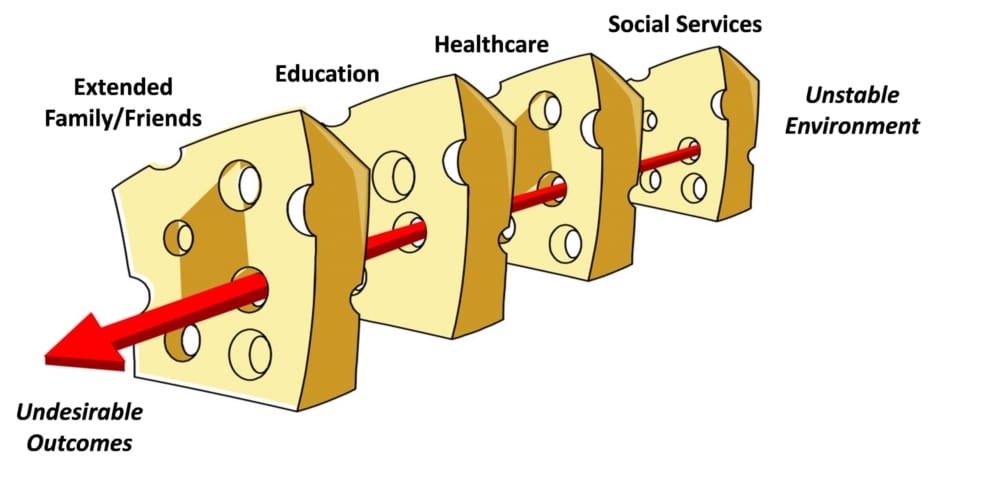Let me introduce you to Daphne, a two year old girl who loves eating ice cream, collecting purple clothes, and rocking out to Beyoncé. Daphne is an imaginary character, but she is just like any other toddler, discovering her own interests and abilities and ready to explore almost anything. But Daphne lives in a somewhat troubled household. Her father, an alcoholic, has been out of a job for over a year. Her mother, out late working one odd job or another, is suffering from untreated depression. And because Daphne’s parents cannot afford to send her to day care, she is most often left at home in the care of her father or one of her older brothers, fiddling with her purple sweater and a Beyoncé CD case.
This type of situation is remarkably common; almost two-thirds of the population is exposed to at least one traumatic stressor in childhood. These environmental factors can be a real threat to the development of children like Daphne. As a neglected child surrounded by substance abuse and mental illness, Daphne is more likely to experience problems with drug use and mental health herself later in life. She is more likely to have sex before age fifteen, deal with unintended pregnancies, and be the victim of domestic abuse (The ACE Study). Daphne is only two years old, yet the promise of a healthy, happy, and productive life is at risk for her.
The Science of Brain Development
On what grounds do we make these dire predictions about Daphne’s future? Over the last twenty years, scientists, physicians, and psychologists have conducted extensive studies on the dynamics of early brain development, and our understanding today of the brain science is far more advanced than that on which most current programs and interventions were based. Researchers at the Harvard Center on the Developing Child, for example, have identified three core concepts related to early childhood development:
- Experiences in the early years of human life dramatically affect brain architecture through gene-environment interaction
- Essential developments of a young child’s brain occur through repeated interactions with adults, using language, facial expressions, and gestures (sometimes called “serve and return” interaction)
- Toxic stress responses to adverse childhood experiences (ACEs), such as abuse, neglect, or sustained household dysfunction, can disrupt brain development in long-term ways
These findings have dramatic implications for all children, parents, and caregivers. But they are particularly important for children, like Daphne, who are exposed to too many ACEs and not enough “serve and return interactions” that promote healthy brain development. For them, it is critical that there be resources available to help stabilize the child’s environment – through widely available early care programs and mental health resources as well as with appropriate and timely interventions from caregivers and child service agencies. Numerous studies have shown that investment in the early years has far greater return for society than at any other period in life, whether those returns are measured in terms of higher income and productivity or lower healthcare, incarceration, or welfare costs (see, for example, Professor James Heckman’s research at the University of Chicago.
There is already noticeable momentum on these issues from multiple sources – governments, funders, nonprofits, health professionals, educators, and more. The key question is, in what ways should society come together, at the local, regional, and national levels, to best address the unmet need in early childhood development?
The Swiss Cheese Model
In 1990, psychologists James Reason and Dante Orlandella at the University of Manchester put forth a “Swiss cheese model” for understanding human error and organizational failure. They likened a system’s ability to withstand stress to a series of Swiss cheese slices. Each slice is comparable to a single strategic component of the entire system, and holes in the slices represent weaknesses in these system components. When a set of holes across all slices align, the system is perilously vulnerable to failure.
The Swiss cheese model (adapted from the Dallas Fort Worth Hospital Council Foundation) has been used to improve safety and risk management in numerous fields, including aviation, disaster response, and healthcare. It is a powerful way of understanding why undesirable outcomes occur frequently in issues where multiple players and components are involved.
In the space of early childhood development, undesirable outcomes may not always be immediately obvious, but they have far-reaching consequences. And too often, the holes in the cheese slices align at the intersection of the education system, the healthcare sector, and other family and welfare services. To a great extent, early childhood care and education is considered to be the domain of the immediate family, not the responsibility of government or society at large. So, many of these departments, agencies, and organizations operate in isolation, focusing on their individual roles and objectives, supporting individual children and families but not part of an aligned system. Children like Daphne, however, need a coordinated set of resources, in which the social worker, who knows the household dynamics, the preschool teacher, who understands the child’s cognitive abilities, and many others in the system are sharing information, perspectives, and strategies. In the absence of such a system, underserved children arrive at the door of the formal education system not only years behind their more affluent classmates in cognitive development, but also with developmental challenges that hinder their ability to catch up.
There is no silver bullet solution to supporting early childhood development and ensuring that no (young) child is left behind. However, we at FSG are beginning to see a number of promising efforts that coordinate the work of multiple systems to promote healthy development in early childhood. Some of these are locally-based collective impact efforts, while others are broader movement-building initiatives. In my next blog, I will discuss some of these emerging initiatives and how they are innovating to avoid the Swiss cheese dilemma and improve early childhood outcomes.
Read part two of this series: Innovating to Align Early Childhood Services

